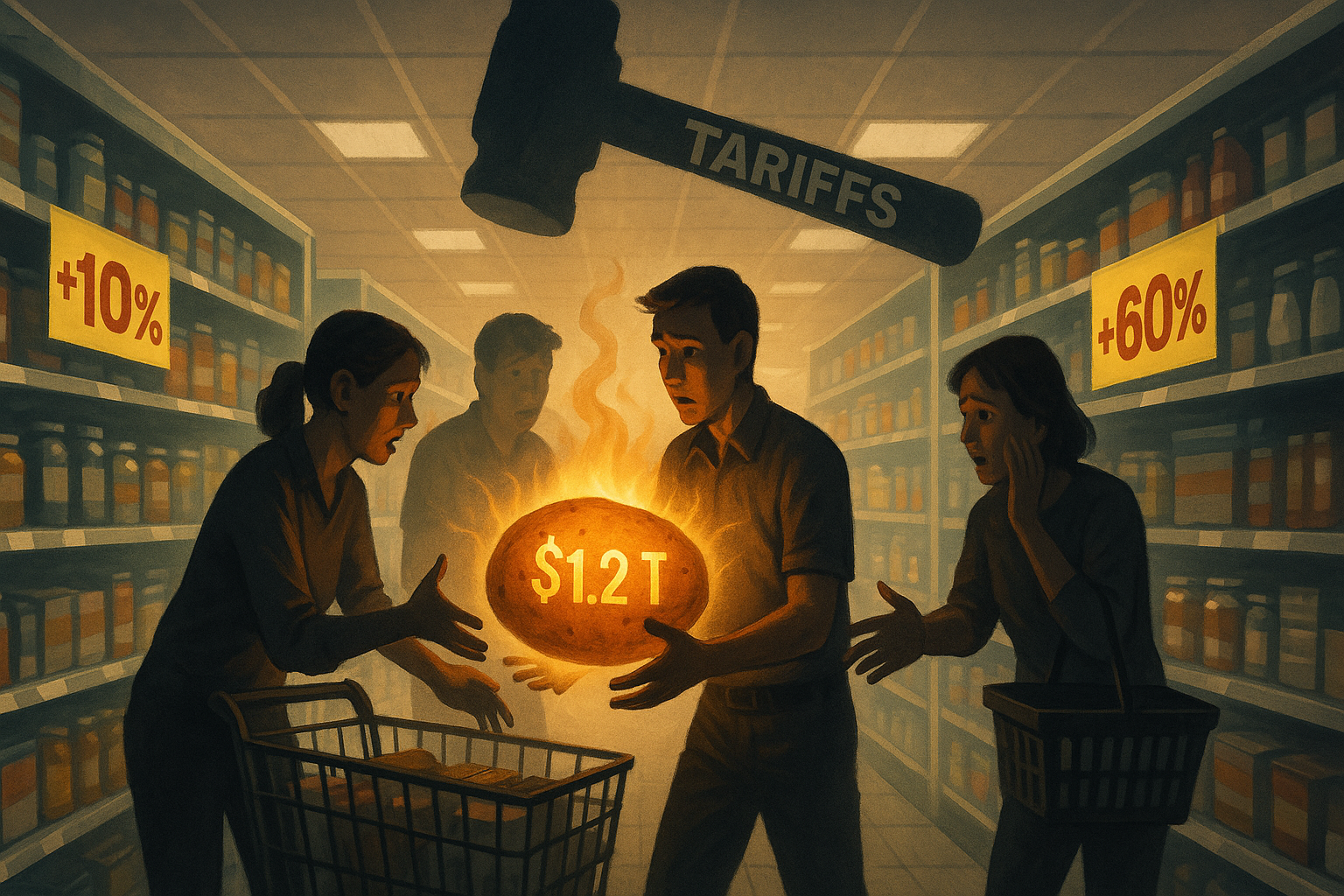The American tariff debate is back with a vengeance. Just when we thought we'd moved beyond the trade squabbles of 2018-2019, we're staring down the barrel of potentially the most sweeping import tax regime in modern American history.
According to a Wall Street analysis making waves among investors this week, Trump's proposed tariffs could saddle companies with a staggering $1.2 trillion in new costs. And let's be clear about where those costs will ultimately land—in the pockets of American consumers.
I've covered trade policy since the early days of the first Trump administration, and there's something eerily familiar about this moment. Same rhetoric, bigger numbers.
The proposal on the table isn't subtle. We're talking about a potential 10% tariff on literally all imports, with Chinese goods getting slapped with a punitive 60% rate. It's less a scalpel and more a sledgehammer approach to trade policy.
"This would represent the most significant restructuring of American trade relationships since at least the 1930s," explained Marcus Henley, chief economist at Brighton Capital, when I spoke with him yesterday. "The ripple effects would touch virtually every sector of the economy."
Here's the thing about tariffs that often gets lost in the political messaging—they're essentially a sales tax with extra steps. When a retailer like Target faces a 10% increase in the cost of imported goods (which, let's face it, is most of what they sell), they've got limited options.
They can eat the costs... which, ha! Good luck telling shareholders you're voluntarily slashing profit margins.
They can scramble to find non-tariffed suppliers, which takes years, not months.
Or—and this is what actually happens—they can pass those costs along to you and me.
Look, I remember sitting through those earnings calls in 2019 when executives swore up and down they wouldn't raise prices. Fast forward two quarters, and suddenly customers were seeing "supply chain surcharges" and "logistics adjustments" on their receipts. Funny how that works.
What makes this round potentially more painful is its sheer scope. Previous tariff regimes created winners and losers—if you manufactured lawn chairs in Michigan, maybe you benefited when Chinese lawn chairs got more expensive. But with across-the-board tariffs? There's nowhere to hide.
The timing couldn't be worse. We're barely out of an inflation crisis that had families choosing between filling gas tanks or refrigerators. The Fed has been performing economic acrobatics trying to engineer a soft landing. Throwing a trillion-dollar cost increase into the mix now is like offering tequila shots at an AA meeting.
(And yes, I'm fully aware that supporters will argue these tariffs will bring manufacturing jobs roaring back to America. Perhaps they will—some of them, anyway. But at what price? Even using wildly optimistic job creation estimates, we're effectively asking consumers to pay millions per job created.)
There's something almost darkly comic about fighting inflation with policies that... cause inflation. It's economic policy by M.C. Escher—staircases that somehow go up by going down.
Markets, which hate nothing more than uncertainty, are already fidgeting. Retail stocks have been bouncing around like a kid who found the Halloween candy stash. Consumer discretionary companies—those selling things people can choose not to buy—are particularly vulnerable.
I've spent the week calling retail executives, most of whom would only speak off the record. Their planning sessions sound like disaster preparedness drills.
"We're running scenarios where we might have to increase prices 15-20% across hundreds of categories," one big-box retail executive told me. "There's no version of this where the consumer doesn't feel significant pain."
The strangest part in all this? Many of the companies and consumers who would be hammered hardest are located in regions that most strongly support these very policies. It's a peculiar form of economic self-flagellation that only makes sense in today's tribal political landscape.
For investors trying to navigate this minefield, the key question is which companies can best play hot potato with these costs. The winners won't be those who avoid tariffs entirely—that's likely impossible—but those who can pass costs along fastest while retaining customers.
Meanwhile, if you've been eyeing a new refrigerator or that living room set... well, you might want to speed up your timeline. Those imports aren't getting any cheaper.
The economy is complicated. Policy is messy. And as we head toward what could be the biggest shake-up in American trade policy in generations, one truth remains: When politicians throw trillion-dollar wrenches into the economic machinery, it's rarely the people tossing the wrenches who end up footing the repair bill.
